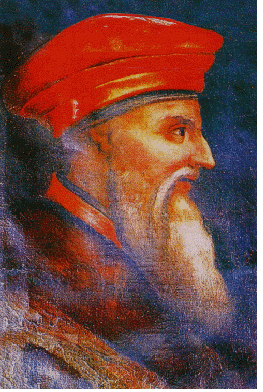...Best of Sicily presents... Best of Sicily Magazine. ... Dedicated to Sicilian art, culture, history, people, places and all things Sicilian. |
by Vincenzo Salerno | |||||
Magazine Index Best of Sicily Arts & Culture Fashion Food & Wine History & Society About Us Travel Faqs Contact Map of Sicily
|
An Albanian resistance to foreign domination coincided with Ottoman expansion in the Balkans. This was led by the Albanian patriot Gjergi (George) Kastrioti "Scanderbeg," son of Gjon. Across the Adriatic, Scanderbeg found support from Pope Pius II, the Venetians, and particularly Alfonso, King of Aragon, Naples and Sicily (died 1458). On several occasions, the Neapolitan kings hired Albanians as mercenaries Despite heroic efforts, Albania fell to the Turks, and Islam was widely introduced in the region. In Italy, Alfonso and his successors offered refuge to thousands of Albanians. Scanderbeg himself died in 1468, and in the decades to follow waves of refugees arrived in southern Italy, particularly in Calabria. A few were nobles and some had been soldiers, while others were clergy, farmers or craftsmen - all in search of a better life and freedom from Turkish oppression. In 1480 the Turks attacked the Italian coast and briefly occupied the city of Otranto. In the following two decades, one Albanian town after another fell to Turkish control. In Sicily, several towns were founded or repopulated by the Albanians, who in Sicilian records were often described as "Greeks," Albanians, Slavs or even "Tartars." These "Arbereshe" communities still exist today. In Sicilian land census (rivelli) records dating from the 1490s, the early Albanians' surnames are somewhat Italianized, perhaps because many were assumed or modified in Sicily based on nicknames. It is believed that most of the refugees arriving in Italy bore simple patronymics. Early Albanian acts of baptism and marriage in Sicily are sometimes recorded in Greek characters with some Latin and even Sicilian phrases. The Albanians arriving in Sicily were Orthodox Christians. (In the decades following the Great Schism of 1054, Sicily's Christians became predominantly Roman Catholic.) By 1600, under the Spanish rule of Sicily, their parishes had fallen under Roman Catholic "Uniate" jurisdiction, though use of the Byzantine rite was permitted. In towns settled by the Albanians, there are usually two main churches - one "Latin" and the other "Greek." Today, the Martorana (in Palermo), constructed as an Orthodox church in the twelfth century, is part of the Byzantine Catholic diocese of Piana degli Albanesi. (Back in Albania, Islam became popular, and many of today's Albanians are Muslims.) The Albanian language has been preserved in the towns populated by the immigrants. As one might expect, the language bears the marks of fifteenth century grammar and diction. In some cases, the Church itself encouraged the Albanians to settle on formerly monastic lands, particularly in western Sicily. In others, feudal lords welcomed the new residents. Messina and Palermo boasted the largest urban Albanian communities in Sicily. The Sicilian towns founded or repopulated by the Albanians are Piana degli Albanesi, Santa Cristina Gela, Mezzojuso, Contessa Entellina, Palazzo Adriano, Sant' Angelo Muxaro, Bronte, Biancavilla and San Michele di Ganzaria. By 1300 the Orthodox parishes and monasteries of Sicily had been Latinized. (That is to say, they had become Roman Catholic.) Today's "Byzantine" presence, such as it exists, is attributed to the Albanians. The Albanians in Sicily came from various parts of Albania, but their Sicilian communities were linked by common bonds, and marriages between spouses from different Arberesh towns were not unusual. It would be fair to describe the Albanians' arrival as the largest single historical "immigration" into Sicily, as distinguished from a military conquest or mass colonization. By 1500, there were probably over a thousand Albanian families in Sicily, and many thousands of today's Sicilians are their descendants. About the Author: Palermo native Vincenzo Salerno has written biographies of several famous Sicilians, including Frederick II and Giuseppe di Lampedusa. | ||||
Top of Page |
 Albania
was anciently inhabited by a people called the Illyrians and became
a province of the
Albania
was anciently inhabited by a people called the Illyrians and became
a province of the